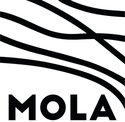Pudding Mill Lane (Crossrail XSK10)
Museum of London Archaeology, 2019. https://doi.org/10.5284/1055119. How to cite using this DOI
Data copyright © Museum of London Archaeology, Crossrail Ltd unless otherwise stated
This work is licensed under a Creative Commons Attribution 4.0 International License.
Primary contact
Karen
Thomas
Head of Archive
Museum of London Archaeology
Resource identifiers
- ADS Collection: 3010
- DOI:https://doi.org/10.5284/1055119
- How to cite using this DOI
Introduction

A watching brief was carried out under Crossrail contract C261 Archaeology Early East, three boreholes and seven trial pits all within the confines of the Bulk Supply Point, Pudding Mill Lane were investigated. Natural geology in the form of Shepperton/Lea Valley Gravel was recorded across the site in the boreholes. The gravel surface ranged was slightly lower in the western corner of the site. The very edge of the gravel island appears to have been located in north possibly north east dropping off into lower lying channel areas. Low lying organic deposits were identified to the south and an alder tree trunk was cored at the base of the sequence to the south west of site alongside the present course of the River Lea. There is a variable thickness of alluvium onsite but the degree to which these deposits were contaminated or disturbed/redeposited could not wholly be ascertained as part of the watching brief. A Victorian/Edwardian Staffordshire Blue brick surface possibly related to the river wall construction was located in the western corner of the site and a cobbled surface with narrow gauge railing lines running through it in an east to west orientation was recorded to the centre of the site along with a buried storage tank. These are all likely to be related to the lampworks or soap works.
A general watching brief during ground reduction and removal of contaminated deposits at the Crossrail C261 Pudding Mill Lane portal, in the area of the National Grid bulk supply point, recorded a Holocene alluvial sequence, an ephemeral wattle structure of uncertain date and post-medieval cut features and foundations relating to the industrial use of the site from the 19th century. Two Parish boundary marker stones were also recorded within the alluvium.
Targeted watching brief carried out at the Pudding Mill Lane Portal as part of the Crossrail project, including Cut and Cover tunnel Sections 2B and 3, a coffer dam in the river Lea, a grout shaft, and observations made during a general watching brief carried out during enabling works. Holocene alluvium was recorded across the site.





